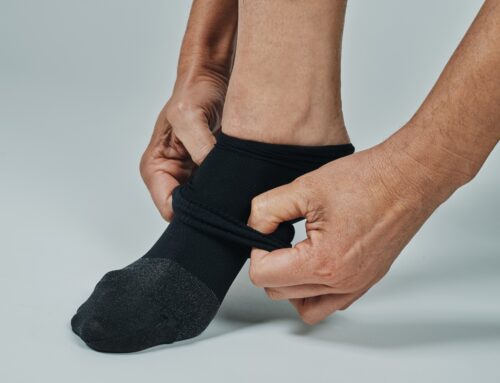In recent years, wearing compression gear while exercising has become a staple in fitness enthusiasts’ wardrobes worldwide. This trend transcends mere fashion, as more and more athletes, from amateurs to professionals, integrate pressure clothing into their workout regimes.
This surge in popularity is not without reason. Pressure Garments, known for its snug, skin-tight fit, is engineered to support and enhance physical performance, recovery, and overall comfort during exercise.
What is Compression Gear?
Compression gear, a term now synonymous with modern fitness attire, refers to clothing specifically designed to fit tightly around the skin. These garments are made from elastic materials, such as spandex, and are engineered to exert gentle pressure on the muscles they cover. The primary types of compressive support include sleeves, socks, leggings, shorts, and shirts, each targeting different body parts.
Types of Therapeutic Clothing
- Sleeves
Often worn on arms or legs, these provide targeted pressure to specific muscle groups. - Socks and Stockings
Designed for the feet and legs, they are popular among runners and athletes involved in endurance sports. - Shorts
These offer targeted pressure around the thigh and groin area, favored in sports requiring extensive leg movement. - Shirts
Compression shirts cover the torso, often used in upper-body intensive sports or for posture support. - Leggings/Tights
Providing muscle stabilization along the entire leg, they are a common choice for a range of activities, from yoga to long-distance running.
Brief History and Evolution
The concept of compressive support in sports isn’t new. It finds its roots in medical compression wear used for patients with circulation problems. Athletes initially adopted these garments to combat swelling and fatigue during long flights. However, it didn’t take long for the sports industry to recognize their potential beyond just travel wear.
The evolution of supportive apparel in sports and fitness has been driven by technological advancements in fabric and design. Initially, these garments were primarily functional, aimed at improving blood flow and reducing muscle oscillation during physical activities. Over time, they have evolved to become more specialized, with designs catering to specific sports and exercises. Today, supportive apparel not only serves a functional purpose but also integrates elements of comfort, style, and personal expression in sports attire.
This evolution reflects a deepening understanding of the interplay between attire and athletic performance, marking compression gear as an essential component in the modern athlete’s wardrobe.
Science Behind Compression Gear
The rising popularity of compression gear in the fitness world is not just a trend; it’s grounded in science. Understanding the mechanics behind how compression gear works and the research supporting its efficacy can help athletes and fitness enthusiasts make informed choices about incorporating these garments into their workout routines.
Understanding the Mechanics
Compression gear operates on a simple yet effective principle: applying a balanced amount of pressure to specific body parts to enhance blood circulation. This pressure is meticulously calibrated – tight enough to be effective, yet not so tight as to hinder circulation. (Source)
- Enhanced Blood Flow
By applying gentle pressure to the muscles, supportive apparel helps to accelerate venous return to the heart. This process increases the flow of oxygen-rich blood to the muscles and facilitates the removal of metabolic wastes like lactic acid. - Reduced Muscle Oscillation
During exercise, muscles vibrate or oscillate, which can lead to muscle fatigue and soreness. Compression gear limits these oscillations, thereby reducing the risk of muscle damage and the onset of fatigue. - Improved Muscle Oxygenation
With better blood circulation comes increased oxygen delivery to the muscles. This improved oxygenation is key for enhancing athletic performance and endurance.
Research and Studies Supporting Efficacy
Numerous studies have delved into the effectiveness of compression gear in sports and exercise. A common finding across many of these studies is the gear’s ability to reduce muscle soreness and fatigue during and after workouts. For instance, research found that athletes who wore pressure garments experienced less muscle soreness and faster recovery times compared to those who didn’t wear such gear. (Source)
Another study, highlighted improved endurance in athletes wearing pressure clothing, attributing this to better muscle oxygenation and reduced muscle oscillation. (Source)
It’s important to note, however, that while many studies support the benefits of compression gear, results can vary depending on the type of exercise, the individual athlete, and the specific garment used. The field continues to evolve, with ongoing research shedding more light on the nuances of how supportive apparel can optimize athletic performance and recovery.
Benefits of Wearing Compression Gear
The use of compression gear during exercise offers a range of benefits that contribute to enhanced performance, quicker recovery, and overall improved exercise experience. From boosting blood circulation to reducing injury risks, the advantages of incorporating pressure garments into workout routines are manifold.
Enhancing Blood Circulation and Oxygen Delivery to Muscles
One of the primary benefits of therapeutic apparel is its ability to enhance blood circulation. This improved circulation facilitates a more efficient oxygen supply to the muscles. Oxygen is important for muscle function, helping sustain performance during exercise. With better oxygenation, muscles can work harder and longer, which is particularly beneficial in endurance sports.
Reducing Muscle Fatigue and Soreness
Compression gear has been shown to play a significant role in reducing muscle fatigue and soreness, both during and after exercise. By providing consistent pressure, these garments help in reducing the build-up of lactic acid in the muscles, a common cause of muscle soreness. This benefit not only improves immediate performance but also aids in quicker recovery, allowing for more consistent and intensive training sessions.
Improving Performance and Endurance
Athletes across various disciplines report improvements in performance when wearing compression gear. This improvement can be attributed to the combined effects of enhanced circulation, better oxygen delivery, and reduced muscle oscillation. All these factors contribute to a more efficient and effective workout, enabling athletes to push their limits and achieve better overall performance.
Providing Support and Reducing the Risk of Injury
Compression gear also offers physical support to the muscles and joints it covers. This support can help in maintaining proper alignment and form during exercise, which is vital in reducing the risk of injury. Additionally, the snug fit of compression garments provides a degree of proprioceptive feedback, which helps in better awareness of body movements and positioning. This increased proprioception can be important in activities that require precision and coordination, further helping in injury prevention.
Choosing the Right Compression Gear
Selecting the appropriate compression to maximize its benefits during exercise. The effectiveness of these garments largely depends on their material, fit, and type. Here are some factors to consider and tips on how to wear and care for your compression gear.
Factors to Consider
- Material
Look for high-quality, breathable fabrics that offer moisture-wicking properties. Materials like nylon, spandex, and elastane are popular choices. They should provide sufficient compressive support without causing discomfort or restricting movement. - Fit
The right fit is essential for medical compression wear to be effective. It should be snug but not overly tight. Supportive apparel that is too tight can hinder circulation, while too loose a fit won’t provide the necessary benefits. When trying on compression gear, make sure it feels supportive without pinching or digging into your skin. - Type
Choose the type of compression gear based on the specific area of your body you want to target or the particular sport you engage in. For example, runners might benefit more from compression socks or calf sleeves, while weightlifters might prefer compression shorts for lower back and thigh support.
Tips on How to Wear and Care for Compression Gear
- Wearing Tips:
- Gradually increase the duration you wear compression gear if you’re new to it, allowing your body to adjust to the feel and pressure.
- Ensure that the compression garments are evenly fitted without any bunching or rolling, as this can create uneven pressure points.
- Consider the climate and weather conditions. In warmer climates or during intense workouts, opt for lighter, more breathable fabrics.
- Care Tips:
- Follow the washing instructions provided by the manufacturer to maintain the elasticity and durability of the supportive spparel.
- It’s generally recommended to machine wash in cold water and air dry, as high heat can damage the elastic fibers.
- Avoid using fabric softeners and bleach, as they can break down the compression material over time.
Compression Gear for Fitness
From enhancing blood circulation and oxygen delivery to muscles to reducing muscle fatigue and the risk of injury, supportive apparel is more than just a fitness accessory—it’s a tool to optimize your exercise routine.
As you consider integrating compression gear into your workout regimen, remember that it’s not just about wearing these garments but choosing the right ones for your specific needs and activities. Whether you’re a seasoned athlete or just starting on your fitness journey, embracing therapeutic clothing can be a significant step forward in enhancing your performance and recovery.
Whether you’re looking for a custom fitting or simply wish to explore our range of high-quality pressure garments wear, Care-Med LTD is here to assist you. Don’t miss out on the opportunity to enhance your performance and recovery.
Share This Story, Choose Your Platform!
Table of Contents
We specialize in orthotics, body braces, and compression wear tailored to your unique needs in Toronto. Reach out to us at info@caremed.care or call 416-782-5353 to book your fitting and consultation.
Experience the difference of customized solutions designed just for you.











